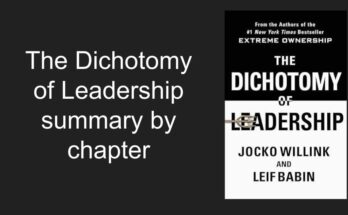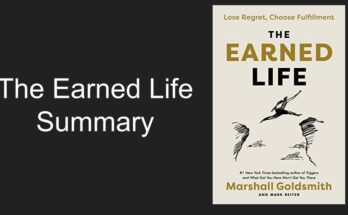The checklist manifesto summary by chapter – How to get things right by Dr. Atul Gawande, is one of my all-time favorite books.
The book throws light on the efficacy of checklists, and ways to use them for team building, memory management, and improving communication.
Dr. Atul Gawande finds checklists as a tool to manage complexity in Medicine, finance, construction, restaurant management, and aviation.
In this short, The Checklist Manifesto summary by chapter, we will see all chapters of this marvelous book in brief.
What are the key takeaways from The Checklist Manifesto summary by chapter?
- How to use checklists to get things right at first time?
- How did Dr. Atul Gawande come up with The checklist manifesto?
- And the checklist manifestos summary by chapter with key learnings of each chapter.
The checklist manifesto summary by chapter – Introduction
In the introduction of the checklist manifesto, there is an incident about a patient referred to Dr. Atul Gawande by one of his friends.
The patient that came in had a stab wound, the doctors treated it like a normal wound which was actually a wound from the bayonet. (A blade that is usually fixed on the rifle)
Since it was stabbed by bayonet it caused much deeper damage to the patient.
When the patient was referred to Dr. Atul Gawande for diagnosis, the patient went on asystole (Cardiac Flatline), Gawande was unable to do the diagnosis and the patient suffered from a potassium overdose.
All this could have been avoided if doctors had inquired about the stab injury in the first place.
Summary of Chapter 1 – The Problem of extreme complexity
In the field of medicine, there are many specialties and sub-specialties that for even a computer it is difficult to keep track of treatment and diagnosis.
With these many specialties, medicine has become extremely complex and hard to manage.
When attempting to specify a diagnosis of the patient, the “other” category becomes the most common response.
Dr. Gawande shares that in the case of this collective intelligence, it creates more complexity while it should be simple to manage.
In this chapter of the checklist manifesto summary, Dr. Gawande speaks about the case of a girl who drowned in icy water and was later saved by a Swiss rural hospital.
“What to do when expertise isn’t enough?” How to take advantage of the collective intelligence of so many specialists in Medicine.
Summary of Chapter 2 – The Checklist
The checklist safeguards us against two human errors
- Faulty Memory
- Skipping protocol
Boeing lost one government contract due to the complexity of B-17, to make it easier for pilots to fly the plane, they made a checklist. This was the first time that Pilots were provided with a checklist and it helped them fly better.
In any hospital, four vitals are checked, temperature, pulse, blood pressure, and respiratory rate, this kind of small checklist procedure helps to catch problems early.
In the checklist manifesto book, there is an example of Peter Pronovost who tried a Doctor’s checklist to prevent line infection at John Hopkins Hospital.
With the implementation of the checklist, they also gave authority to nurses over the procedure.
As a result, the line infection decreased drastically.
Gradually they experimented with other checklists and found that they helped them improve patient care.
The implementation checklist requires buy-in from users and management, without which it will not succeed.

They tried a checklist in Sinai-grace with management buy-in, where Sinai went from one of the worst rates of line infection to one of the best.
Dr. Gawande again shares the example of a drowned girl, who was actually saved by a checklist and careful review of the procedure with all stakeholders.
Do not have time to read books? How about an Audiobook? Read the checklist manifesto for free on Audible. Sign up now.
Summary of Chapter 3 – The End of master builder
The checklist can be created by breaking down complex problems into small chunks and steps, which are easy to follow.
But what to do when faced with unexpected events arises.
How is the building constructed? Like any other field construction also has many specializations, rather it requires the collaborative effort of civil, mechanical, and electrical experts.
So, how does a builder get their work done?
Lots of checklists, there are daily, weekly, and monthly tasks are broken down into various checklists.
There are tasks assigned to each individual with deadlines, color codings are used for critical steps, in all steps, and checklists are maintained in the computer systems.

Still, if there are any unexpected problems related to cement, plumbing, or anything, they have “submittal schedules” where they have cross-interactions between all experts e.g electricians will speak to plumbers.
This keeps the communication going which helps to prevent unexpected problems or if there are any problems it helps them to solve them.
Summary of Chapter 4 – The Idea
From the building industry example, we learned that they use an extensive checklist to function.
However, checklists require one more element to succeed. That is decision-making authority.
Dr. Gawande says “In response to risk, most authorities tend to centralize power and decision-making.”
However, decentralization of decision-making is more effective than centralization of decision-making.
An example of that is New Orleans when Katrina hit. State and central authorities refused to give power to local authorities.
On the other hand, Walmart allowed store managers to make their decision independently.
In one case, A Walmart manager gave away water, food, and diapers. While another manager gave away everything before it could get destroyed in flood, even risking his life to save medicine.
It is not about the comparison of Govt and corporates, it’s just even in such situations Walmart was able to continue its operations.
Summary of Chapter 5 – The First Try
WHO enlisted Dr. Gawande to help to improve patient outcomes in developing countries. Where other means of communication had failed in the past.
Dr. Gawande suggested the use of extensive checklists to help health workers to survive in disparate environments and working conditions.
In this chapter, Dr. Gawande gives the example of Stephen Luby from Proctor & Gamble, who helped change washing behavior with the help of a checklist in Karachi.
Another example, How hospitals use checklists to prevent surgical infections and complications. The surgery usually has four major risk factors: infection, bleeding, anesthesia, and unexpected complications.
Unexpected complications can be avoided by team communication, So including team communication is a must for a checklist.
The WHO committee decided to make checklists and arranged a pilot to verify the efficacy of these checklists. Dr. Gawande found out the checklist was all wrong.
Summary of Chapter 6 – The checklist factory
Dr. Gawande contacted Daniel Boorman to understand how flight checklists work, he wanted to correct the mistakes made while creating the first checklist.
Daniel explained how their checklists are divided into normal and non-normal checklists. There were checklists for every situation.

An ideal checklist should have the following.
- Only 5 to 9 items
- Pause point for 90 seconds
- Simple wordings.
- Use known professional jargon.
- Must be 1 page only
- DO- CONFIRM vs RE-Do
DO- CONFIRM checklists are where tasks are performed and later checked with items in the checklist.
RE-Do is the Read and do checklist where tasks are performed referring to the checklist.
Summary of Chapter 7 – The test
With new learning from the flight checklist, Dr.Gawande attempted to make new checklists for WHO.
They were able to create a checklist with 19 checks, got clarity on who will run the checklist and when, and what areas to include and which ones to skip.
This checklist was sent to 8 sites for the test, and data was collected before and after the implementation of the checklist.
The final verdict was the checklist has improved the health care on each of these sites.
Summary of Chapter 8 – The Hero in the Age of Checklists.
Even though the checklist seems a simple solution to complex problems, it still requires behavioral acceptance from a large population.
A checklist can bring discipline, improve team communication, and helps to build the team effectively.
However, in the field of medicine, finance, and others, professionals are not ready to accept that.
Dr.Gawande states the example of US Airways flight 1549 and its emergency landing in Hudson, which was a victory because of the pilot checklist.
Even though you are the most experienced professional you still need a system and discipline, which a checklist can bring.
Summary of Chapter 9 -The Save
Dr.Gawande himself was not convinced of the efficacy of the checklist until the spring of 2007 when a patient was saved because of the checklist.
Because of the checklist they had all tools and blood supply ready for the surgery, which avoided the close call and saved the patient.
In this short blog for the checklist manifesto summary by chapter we learned all chapters in brief, however, I strongly recommend reading this book.
Read other book summaries here
The five dysfunctions of a team summary
Read Detailed blog on 360 degree feedback


